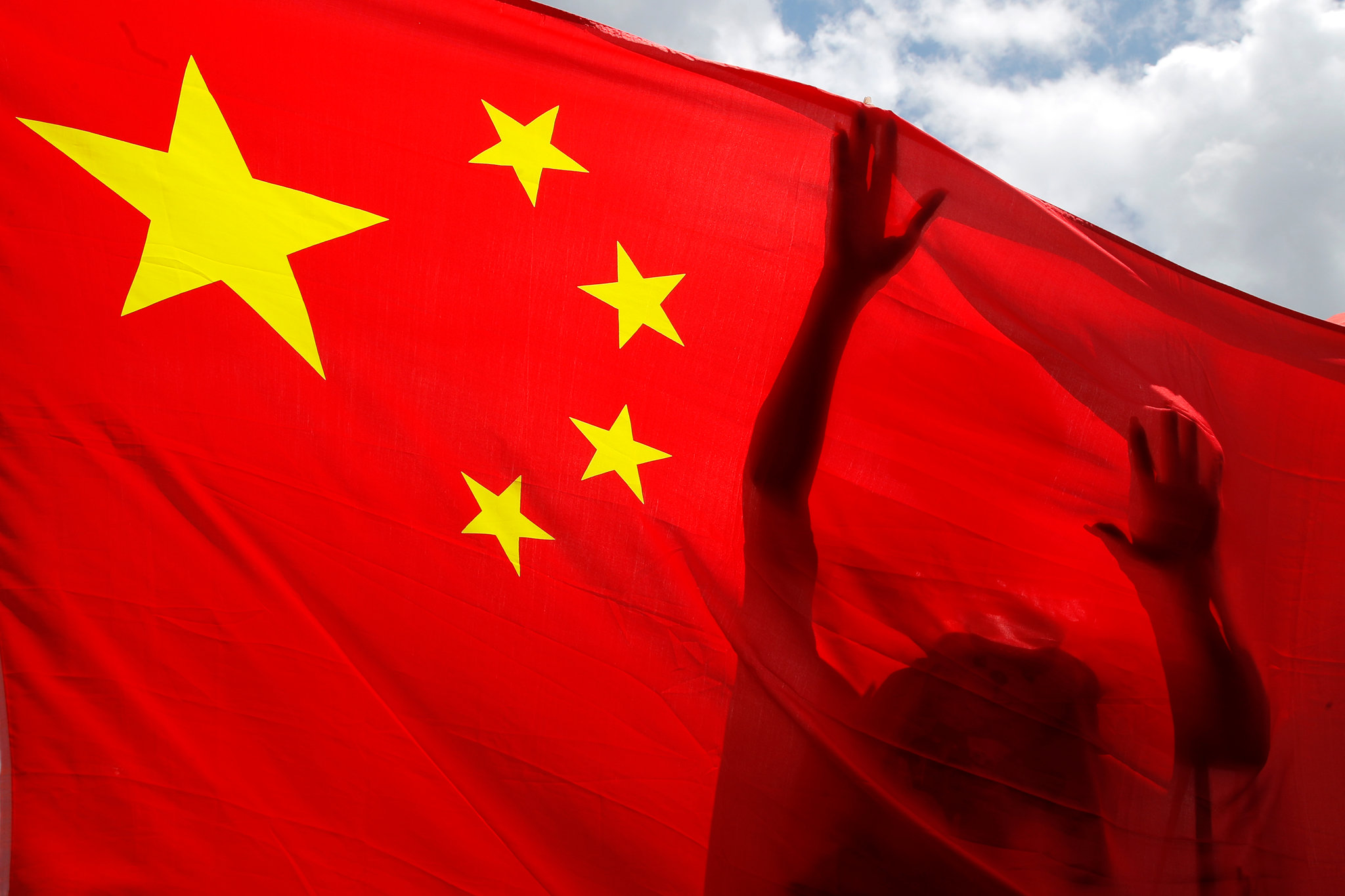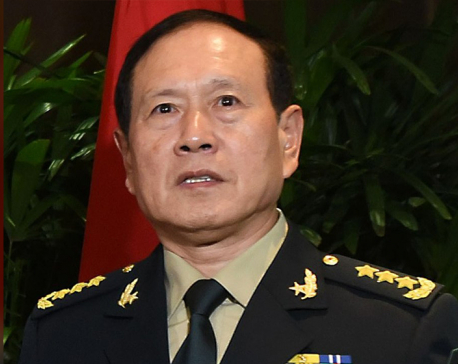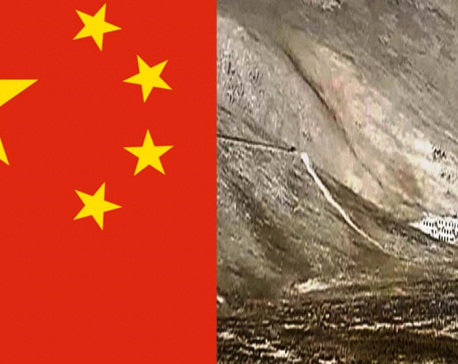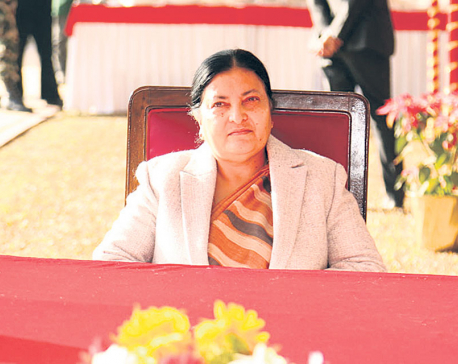
OR
What’s the matter with China?
Published On: September 25, 2020 03:30 PM NPT By: Mahabir Paudyal | @mahabirpaudyal


Mahabir Paudyal
Mahabir Paudyal is an opinion writer at Republica with interest on history, domestic politics and international relations.mahabirpaudyal@gmail.com
More from Author
- Nepal is falling into a trap of India, China and the US
- Prime Minister Oli is pushing the country to precipice. Is there a way to stop him?
- How can you be so irresponsible about education?
- What is Nepali Congress thinking about China?
- Fellow Nepalis, fear the government, fear as much for the country
How true is the recurring story of Chinese occupation of Nepali land? What is the purpose of this story?
Once again, what seemed like a fake report about Chinese occupation of Nepali land has been disproved by the government of Nepal. This is a second media story in a row which pedaled Chinese occupation of Nepali land and which the government ministries disproved as fake. The first story was in circulation for about a year until it was disproved as fake in June (for details, see my piece “Fake news can destroy Nepal’s relations with India, China and the US”).
There is a similarity in pattern between the first and second stories. One outlet picked it and made it a sensational news by citing dubious sources, then it was picked by another and yet another outlet, until it was carried by one ‘big’ media. By then the news of Chinese authorities erecting as many as 11 buildings on Nepali territory in Humla had spread like wildfire in the Indian media. How can the Chinese do this to us? I thought.
Then the Chinese embassy in Kathmandu denied the report stating that buildings constructed by the Chinese side along the Nepal-China border point in Humla district are actually situated on the Chinese side of the border. The Ministry of Foreign Affairs seconded the Chinese claim, further explaining that official records, reports of the joint field inspection and boundary maps have verified and confirmed that the said buildings are not located within the Nepali territory. The boundary pillar number 11, which was initially thought to be lost, has been recovered, and the officer who told the media that China had erected buildings on Nepali land is said to have recanted. This, hopefully, is going to put to rest the debate about whether China was at fault.
But consider the ramifications the story caused. Instantly, interpretations were made that Nepal was surrendering its territory to China and that ‘nationalism’ of Prime Minister K P Oli is only for picking quarrel with India.
After refutation by the Foreign Ministry, Indian media claim China is actually occupying Nepali territories in several districts including in Humla but Nepal is spineless to raise the issue with China because the current ‘communist’ government is ‘China’s puppet.’
I have always argued that Nepali media must be very careful regarding how they project Nepal’s relations with the neighbors and powers beyond the border. Nepal’s relation with each of the big powers—the US, China and India—has its own history and importance.
In recent times, reports that project the current regime as being closer to China are coming out frequently. One report claimed Prime Minister K P Oli has been instrumental in awarding lucrative contracts to the Chinese firms to enrich himself and his cadres and as such Oli has deposited around 5.5 million US dollars in a Swiss bank. Another report in the same outlet accused Rajan Bhattarai, the foreign affairs advisor of PM Oli, as working for the Chinese embassy for Rs 1.5 million rupees. The proof shown as a proof nowhere shows the contract was between the Chinese embassy and Geeta Gautam (Bhattarai’s wife). Both these reports were picked by Nepali online outlets before they were rebutted. For the people deeply frustrated with Oli government the rebuttal looks more false than the ‘false’ stories. There is no way of knowing what this Global Watch Analysis—where these two reports first appeared— is, who it is owned by, where its office is located. The very site looks dubious.
Cold war against China
It is obvious that pestering accusations that Nepal is willingly allowing China to encroach on its territories is meant to reverse Nepal’s engagement with China. In what seems like a reminiscence of the days of opium war, the Western world, especially the US, is rising against China.
China and the US would at one time pick confrontation was suggested by various scholars, from America’s mastermind of China policy Henry Kissinger to Harvard scholar Graham Allison who, through his Thucydides trap theory, suggested imminence of war between China and the US. The US is escalating its efforts to contain China in every possible sphere. Following the periodic clashes at Ladakh, India is also in a war-like situation with China. America, Australia, Japan and India are in an alliance against China.
In South Asia, Nepal is the country which has a friendly relation with India (despite the troubles surfacing now and again). Nepal is the country where the US has started to accord higher priority nowadays and Nepal is the only country which has no dispute with China.
Nepal’s border issue with India resurfaced at a time when India and China were experiencing acrimonious ties, even the prospect of war. This situation has been well exploited by Indian media to show that China is behind Nepal reasserting its sovereignty in Kalapani areas, though the truth to the contrary has been told several times. Besides, the Chinese have been watching Nepal with growing interest in Nepal’s engagement with the US—particularly the MCC project—which the Chinese would be happy to see rejected by the parliament but which the US wants to see ratified.
Nepal raised the border issue with India in November, 2019 and then, after pleas for dialogues went in vain, it published a new map incorporating Lipulekh, Limpiyadhura and Kalapani into it in June. The map was unanimously ratified by both the houses of the parliament.
Three months after ratification of the map, much awaited diplomatic negotiations have not taken place. Unable to handle Covid-19 crisis and the economic crisis it has resulted in, and with one after another ugly corruption scandal unfolding, the government is losing moral strength and popular support that it enjoyed in June on Kalapani matters.
In this situation, if the stories can be manufactured that Nepal is picking border dispute with India while allowing the Chinese to encroach upon Nepali land with abandon, and if these stories are believed, Nepal’s genuine concerns regarding the boundary with India can be dismissed as a non-issue. India will then be able to tell us: Your land has been encroached upon by the Chinese too, why do you not look up north first?
There are claims and counterclaims about Chinese encroachment story. The government and the Chinese side insist that there have been no encroachments and that there is no border issue with China. But the media outlets which propagate the stories of encroachment keep presenting them as true stories, they keep informing the mass that China has occupied Nepali territories but the government of Nepal has no guts to raise the matter. This serves two purposes. One, it will generate deep resentment among general people against China. Second, it will help project the current regime as China’s ‘puppet,’ as Indian media are doing.
Noticeably, a section of Nepali Congress leaders quickly react to such stories and share them on social media and demand the government action without waiting for verification. Some of the Congress leaders had even registered a motion in the parliament to investigate the encroachment story in June. Leader like Bimalendra Nidhi, who is projecting himself as the presidential candidate in the upcoming general convention of the party, seems to be too insistent on encroachment story. This time around, Congress seems to believe China has indeed encroached on land in Humla. On September 24, it issued a statement criticizing the foreign ministry’s denial of encroachment.
What does this indicate about Nepali Congress and Nepal Communist Party (NCP) vis-à-vis China? Are they polarizing into pro and anti-China camp (which automatically comes to mean pro-India pro-US camp and anti-India anti-US camp)?
Push and pull
What has gone unnoticed in the polarization between the US and its allies and China is the geopolitical push and pull, in which Nepal finds itself. Each of the three parties—the US, China and India—wants Nepal to stand by them. Border issue with India has made Nepal look closer to China again. Nepal’s reluctance to endorse the MCC must have sent the message to Washington that Nepal is indeed going into the arms of China.
And then comes the meetings and conferences between the leaders of Nepal Communist Party (NCP) and their counterparts in Chinese Communist Party (CCP) which make Nepal’s China leaning perception more solid and entrenched.
The geopolitical push and pull is going to continue until the current acrimonious relations between China, India and the US turn into less acrimonious and cooperative. As long as this happens, narratives will be built to vindicate the position of one country against the other and vice-versa. Media outlets can be used as a tool, given that they are in disarray already, apparently because of the Covid-19 crisis.
A lot is at stake for Nepal in balancing ties. The dangerous geopolitical game will also test the neutrality and wisdom of Nepali political parties, civil society, media and the intellectuals.
You May Like This

Chinese defense minister’s Nepal visit is an opportunity to strengthen mutual trust
General Wei Fenghe’s visit is going to strengthen the friendly ties subsisting between the PLA and the NA and between... Read More...

China denies encroaching Nepali territory in Humla; asks Nepal to verify the border points
KATHMANDU, Sept 23: Stating that the buildings constructed by the Chinese side along a Nepal-China border point in Humla district... Read More...

Nepal-China railway to boost bilateral, regional connectivity : President
KATHMANDU, April 26: President Bidya Devi Bhandari on Friday said that the development of ‘Trans-Himalayan Multi-Dimensional Connectivity Network’ including Nepal-China... Read More...



Just In
- World Malaria Day: Foreign returnees more susceptible to the vector-borne disease
- MoEST seeks EC’s help in identifying teachers linked to political parties
- 70 community and national forests affected by fire in Parbat till Wednesday
- NEPSE loses 3.24 points, while daily turnover inclines to Rs 2.36 billion
- Pak Embassy awards scholarships to 180 Nepali students
- President Paudel approves mobilization of army personnel for by-elections security
- Bhajang and Ilam by-elections: 69 polling stations classified as ‘highly sensitive’
- Karnali CM Kandel secures vote of confidence















Leave A Comment